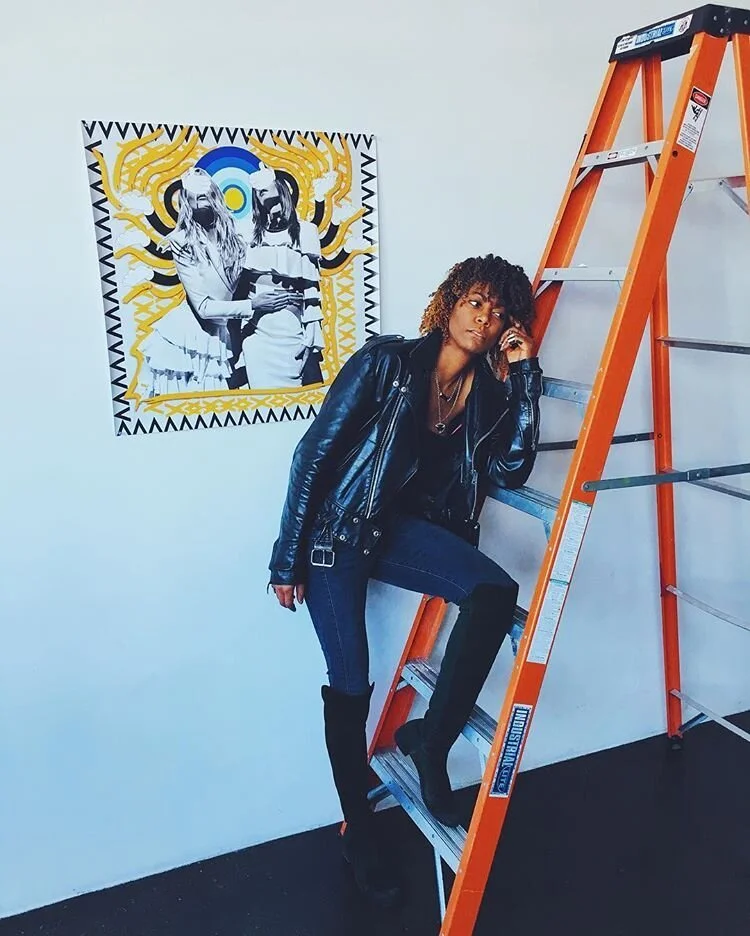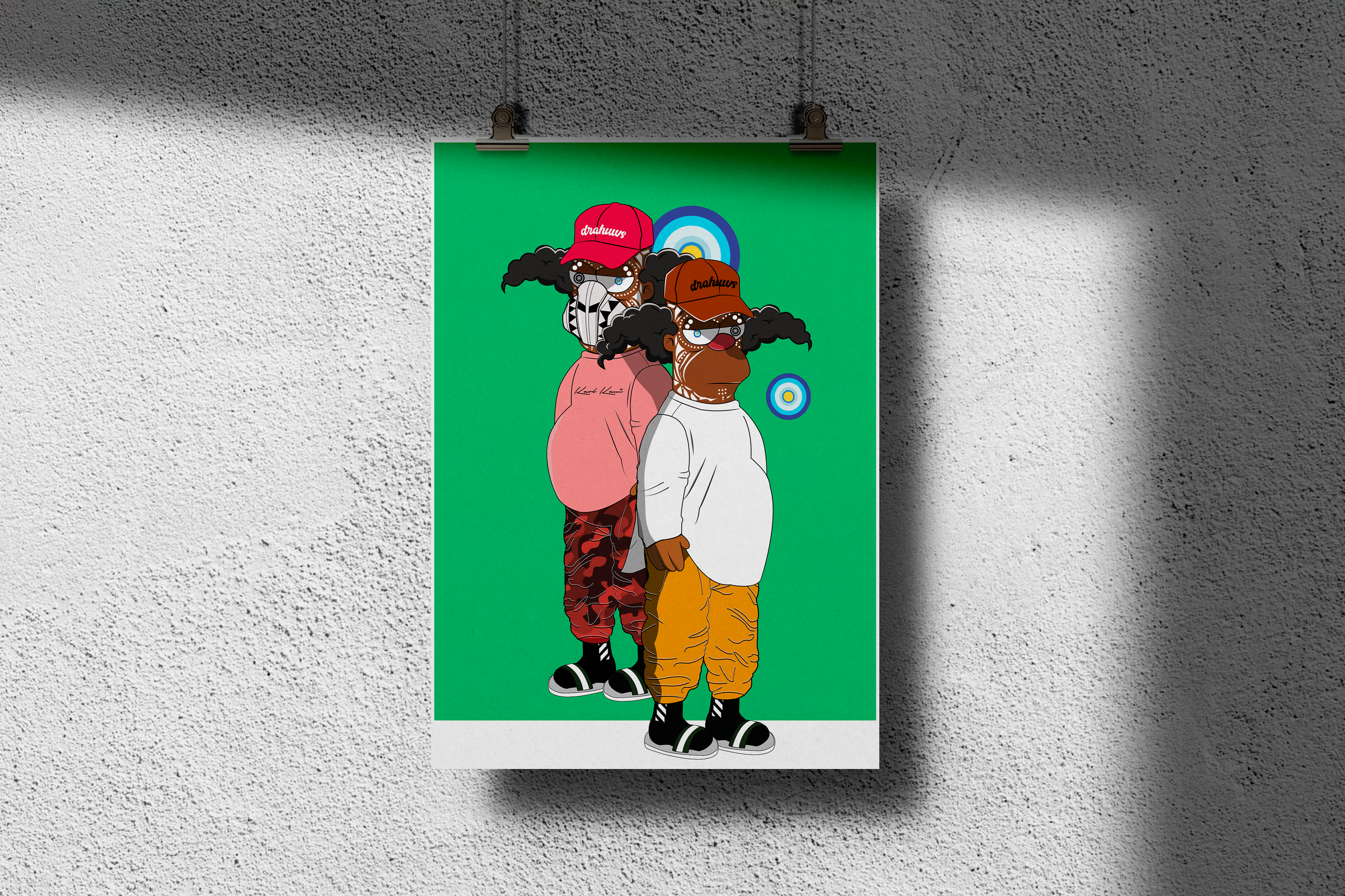4 Contemporary Artists that use figurative characters and motifs in their Artwork
What makes a piece of art stand out from all the others? How, in an age where thousands of forms of content compete for your eyes and attention, do you believe an artist can capture the minds and hearts of many different people?
Your answer might state that an art piece’s form, composition or use of color dictates how popular it can be, but I believe there’s more to it than just that. Cementing yourself or your creations into the memories of the grand collective is no easy feat and therefore has no easy answer. It may very well be a combination of form, composition, and use of color that entice something primordial within us, perhaps there’s something more to it.
A motif, in art and iconography, is an element of an image that may be repeated in a pattern or design. Being symbols, motifs allow the visuals to speak without words. Before the advent of speech and language, symbols must have played a larger role in early human communication. The use of familiar imagery or symbolism can have profound effects on how we respond to it. Motifs can have emotional effects and be used for propaganda.
Today, we explore 4 artists that use iconic imagery and symbolism in their work to remain in the collective view.
Kaws
Photo By Drahuws
KAWS, or his birth name, Brian Donnelly, was born in Jersey City, NJ in 1974. Donnelly studied illustration at the School of Visual Arts in New York and used those years of study to succeed as a background painter on a couple well known 90’s animated series such as Disney’s 101 Dalmations, Daria and Doug.
KAWS’ multi-faceted manner of artistry grants him influence over a wide area of art and design. His prolific body of work ranges from paintings, murals and large-scale sculptures to toys. Known for his iconic “XX” motif, KAWS began his journey as a humble street artist. By altering street advertisements, he managed to find a style all his own. His line of work brings to mind great artists of the past such as Andy Warhol and Claes Oldenburg. There is a sense of sophisticated humor and lighthearted pessimism emanating from every work he displays. His playful continuous use of pop culture icons and hybridization of cartoons with human forms a unique artistic vocabulary that is unique amongst many others in the modern day. His most well-known creation “COMPANION” has hundreds of iterations and is the subject of continuous parodying.
KAWS posts almost daily on his Instagram.
Hebru Brantley
Photo by Dmitry Kropachev
Hebru Brantley creates narrative-driven work revolving around his conceptualized iconic characters. Brantley utilizes these iconic characters to address complex ideas around nostalgia, the mental psyche, power and hope. The color palettes, pop-art motifs, and characters themselves create accessibility around Brantley’s layered and multifaceted ideas. Majorly influenced by the South Side of Chicago’s Afro Cobra movement in the 1960s and 70s, Brantley uses the lineage of mural and graffiti work as a frame to explore his inquiries. Brantley applies a plethora of mediums from oil, acrylic, watercolor and spray paint to non-traditional mediums such as coffee and tea. Brantley’s work challenges the traditional view of the hero or protagonist. His work insists on a contemporary and distinct narrative that shapes and impacts the viewer’s gaze.
Hebru Brantley is a New Jersey-born artist known for his use of narrative-driven design revolving around his iconic characters.. By using these characters to address complex ideas concerning themes of nostalgia, the psyche, power, hope and the freedom to become. His color palettes, pop art motifs and icons themselves foster a sense of accessibility around Brantley’s layered and multifaceted ideas.
Hebru Brantley posts almost daily on his Instagram.
Drahuws
Canadian/Jamaican contemporary artist Drahuws also known as ‘Deidra Hunter’ is a Toronto based designer and illustrator. Drawing inspiration from various aspects of hypebeast and popular culture, Drahuws creates a satisfying blend between the nostalgic fantastical characters of old cartoons and historical black figures. By way of drawings, product, and graphic designs, she seeks to explore different perspectives or messages in today’s modern culture. Each artistic theme is translated into cartoon inspired art which gives the audience the option to bypass the actual message, escape through the art’s vibrant colors, or face the message head-on by reading in-between the lines. Her art pieces usually contain references to modern icons and hidden motifs that begin to say more the longer you look at the art. A common motif included in almost all of her works is the “lens”. The blue lens “acts as an emotional vibe, sun, God or at times a halo.” Deidra’s use of Lens in her artwork is her way of illustrating one being watched over with love from heaven, friends, family or by strangers.
Photo by Desiire
Having been an artist for over 21 years, her interests and self-driven skills led her to study at the Art Instruction School in Minneapolis and further on to the International Academy of Design. Her passion for the arts, culture and design allowed her to create the artistically driven brand “Veni Vidi Vinco”, which successfully sold designs in Paris, UK, New York, California as well as her home base of Toronto. Drahuws’ natural charm allowed her to collaborate with large brands such as Fader Magazine, Rdio, Karamaloop Kazbah, Beesley Architecture Inc, Caribbean Bride Magazine, Manifesto Festival, Lady Luck Entertainment, Community 54, Blkout, DJ Romeo, DJ Lissa Monet and many more.
Takashi Murakami
Drawing from traditional Japanese painting, sci-fi, anime, and the global art market, Takashi Murakami creates paintings, sculptures, and films populated by repeated motifs and mutating characters of his own creation. His wide-ranging work embodies an intersection of pop culture, history, and fine art.
Since the early 1990s Murakami has invented characters that combine aspects of popular cartoons from Japan, Europe, and the US—from his first Mr. DOB, who sometimes serves as a stand-in for the artist himself, to various anime characters and smiling flowers, bears, and lions. These figures act as icons and symbols—hosts for more complex themes of violence, technology, and fantasy.
Photo by Victor Hernandez
In 2000 Murakami curated Superflat, an exhibition featuring works by artists whose techniques and mediums synthesize various aspects of Japanese visual culture, from ukiyo-e (woodblock prints of the Edo period) to anime and kawaii (a particular cuteness in cartoons, handwriting, products, and more). With this exhibition, Murakami advanced his Superflat theory of art, which highlights the “flatness” of Japanese visual culture from traditional painting to contemporary subcultures in the context of World War II and its aftermath.
Murakami’s work extends to mass-produced items such as toys, key chains, and t-shirts. In 2002 he began a multiyear collaboration with Marc Jacobs on the redesign of the Louis Vuitton monogram. Murakami then took the radical step of directly incorporating the Vuitton monograms and patterns into his paintings and sculptures. While Murakami’s imagery may appear to present unprecedented characters and forms, many contain explicit art historical references, and some are even direct contemporary updates on traditional Japanese works.
Takashi is frequently posting his works to his Instagram account.
-
We believe in supporting and promoting entrepreneurs who are taking action on their business ideas. If you're building a brand around Event Business, or any creative venture, we want to collaborate with you!
Here’s how you can join our exclusive promotional partnership:
Purchase a Drahuws Art Piece – Select a piece that resonates with your brand.
Incorporate It into Your Business Space – Display the artwork in your studio, shop, or workspace.
Send Us a Picture – Capture the artwork as part of your business environment. Share your proof of purchase on social media and tag us on Twitter/IG. For a faster response contact us!
Get Featured & Promoted – We’ll create and publish an article about your business, featuring your products and story. Plus, we’ll promote your upcoming events on our website!
This is your opportunity to gain exposure, attract new customers, and be part of a thriving community of entrepreneurs.
Ready to grow your brand with us? After purchasing your art piece, contact us, and we’ll take care of the rest. Your Drahuws Partnership begins now!
Partners
Follow Us
-
We believe in supporting and promoting entrepreneurs who are taking action on their business ideas. If you're building a brand around Event Business, or any creative venture, we want to collaborate with you!
Here’s how you can join our exclusive promotional partnership:
Purchase a Drahuws Art Piece – Select a piece that resonates with your brand.
Incorporate It into Your Business Space – Display the artwork in your studio, shop, or workspace.
Send Us a Picture – Capture the artwork as part of your business environment. Share your proof of purchase on social media and tag us on Twitter/IG. For a faster response contact us!
Get Featured & Promoted – We’ll create and publish an article about your business, featuring your products and story. Plus, we’ll promote your upcoming events on our website!
This is your opportunity to gain exposure, attract new customers, and be part of a thriving community of entrepreneurs.
Ready to grow your brand with us? After purchasing your art piece, contact us, and we’ll take care of the rest. Your Drahuws Partnership begins now!





















